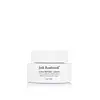What's inside
What's inside
 Key Ingredients
Key Ingredients

 Benefits
Benefits

 Concerns
Concerns

 Ingredients Side-by-side
Ingredients Side-by-side

Water
Skin ConditioningPrunus Armeniaca Kernel Oil
MaskingSimmondsia Chinensis Seed Oil
EmollientCarthamus Tinctorius Seed Oil
MaskingCetearyl Alcohol
EmollientGlycerin
HumectantRosa Canina Seed Extract
EmollientButyrospermum Parkii Butter
Skin ConditioningCitrus Aurantium Dulcis Fruit Water
MaskingCetearyl Glucoside
EmulsifyingChamomilla Recutita Flower Extract
MaskingSodium Stearoyl Glutamate
CleansingRosmarinus Officinalis Leaf Extract
AntimicrobialTocopherol
AntioxidantPelargonium Graveolens Oil
MaskingSodium Levulinate
Skin ConditioningSodium Anisate
AntimicrobialLavandula Angustifolia Oil
MaskingBeta-Sitosterol
Emulsion StabilisingSodium Dehydroacetate
PreservativeSqualene
EmollientLactic Acid
BufferingWater, Prunus Armeniaca Kernel Oil, Simmondsia Chinensis Seed Oil, Carthamus Tinctorius Seed Oil, Cetearyl Alcohol, Glycerin, Rosa Canina Seed Extract, Butyrospermum Parkii Butter, Citrus Aurantium Dulcis Fruit Water, Cetearyl Glucoside, Chamomilla Recutita Flower Extract, Sodium Stearoyl Glutamate, Rosmarinus Officinalis Leaf Extract, Tocopherol, Pelargonium Graveolens Oil, Sodium Levulinate, Sodium Anisate, Lavandula Angustifolia Oil, Beta-Sitosterol, Sodium Dehydroacetate, Squalene, Lactic Acid
Water
Skin ConditioningAloe Barbadensis Leaf Juice
Skin ConditioningGlycerin
HumectantOlea Europaea Fruit Oil
MaskingNiacinamide
SmoothingPisum Sativum Extract
Skin ConditioningChenopodium Quinoa Seed Extract
Skin ConditioningHydrogenated Lecithin
EmulsifyingC12-16 Alcohols
EmollientPalmitic Acid
EmollientPolyglyceryl-6 Polyricinoleate
EmulsifyingPolyglyceryl-2 Isostearate
EmulsifyingDisteardimonium Hectorite
StabilisingHexapeptide-11
Skin ConditioningPalmitoyl Tripeptide-1
Skin ConditioningPalmitoyl Tetrapeptide-7
Skin ConditioningSaccharomyces Ferment Filtrate
Humectant1,2-Hexanediol
Skin ConditioningHydroxyacetophenone
AntioxidantSclerocarya Birrea Seed Oil
HumectantCalophyllum Tacamahaca Seed Extract
HumectantAdansonia Digitata Oil
EmollientSesamum Indicum Seed Oil
EmollientBeta Vulgaris Root Powder
AntioxidantCitrus Grandis Peel Water
HumectantCeramide NP
Skin ConditioningCalcium Chloride
AstringentTocopherol
AntioxidantLeuconostoc/Radish Root Ferment Filtrate
AntimicrobialMica
Cosmetic ColorantTin Oxide
AbrasiveTitanium Dioxide
Cosmetic ColorantCaesalpinia Sappan Bark Extract
Skin ConditioningPhenethyl Alcohol
MaskingEthylhexylglycerin
Skin ConditioningWater, Aloe Barbadensis Leaf Juice, Glycerin, Olea Europaea Fruit Oil, Niacinamide, Pisum Sativum Extract, Chenopodium Quinoa Seed Extract, Hydrogenated Lecithin, C12-16 Alcohols, Palmitic Acid, Polyglyceryl-6 Polyricinoleate, Polyglyceryl-2 Isostearate, Disteardimonium Hectorite, Hexapeptide-11, Palmitoyl Tripeptide-1, Palmitoyl Tetrapeptide-7, Saccharomyces Ferment Filtrate, 1,2-Hexanediol, Hydroxyacetophenone, Sclerocarya Birrea Seed Oil, Calophyllum Tacamahaca Seed Extract, Adansonia Digitata Oil, Sesamum Indicum Seed Oil, Beta Vulgaris Root Powder, Citrus Grandis Peel Water, Ceramide NP, Calcium Chloride, Tocopherol, Leuconostoc/Radish Root Ferment Filtrate, Mica, Tin Oxide, Titanium Dioxide, Caesalpinia Sappan Bark Extract, Phenethyl Alcohol, Ethylhexylglycerin
Alternatives
Ingredients Explained
These ingredients are found in both products.
Ingredients higher up in an ingredient list are typically present in a larger amount.
Glycerin is already naturally found in your skin. It helps moisturize and protect your skin.
A study from 2016 found glycerin to be more effective as a humectant than AHAs and hyaluronic acid.
As a humectant, it helps the skin stay hydrated by pulling moisture to your skin. The low molecular weight of glycerin allows it to pull moisture into the deeper layers of your skin.
Hydrated skin improves your skin barrier; Your skin barrier helps protect against irritants and bacteria.
Glycerin has also been found to have antimicrobial and antiviral properties. Due to these properties, glycerin is often used in wound and burn treatments.
In cosmetics, glycerin is usually derived from plants such as soybean or palm. However, it can also be sourced from animals, such as tallow or animal fat.
This ingredient is organic, colorless, odorless, and non-toxic.
Glycerin is the name for this ingredient in American English. British English uses Glycerol/Glycerine.
Learn more about GlycerinTocopherol (also known as Vitamin E) is a common antioxidant used to help protect the skin from free-radicals and strengthen the skin barrier. It's also fat soluble - this means our skin is great at absorbing it.
Vitamin E also helps keep your natural skin lipids healthy. Your lipid skin barrier naturally consists of lipids, ceramides, and fatty acids. Vitamin E offers extra protection for your skin’s lipid barrier, keeping your skin healthy and nourished.
Another benefit is a bit of UV protection. Vitamin E helps reduce the damage caused by UVB rays. (It should not replace your sunscreen). Combining it with Vitamin C can decrease sunburned cells and hyperpigmentation after UV exposure.
You might have noticed Vitamin E + C often paired together. This is because it is great at stabilizing Vitamin C. Using the two together helps increase the effectiveness of both ingredients.
There are often claims that Vitamin E can reduce/prevent scarring, but these claims haven't been confirmed by scientific research.
Learn more about TocopherolWater. It's the most common cosmetic ingredient of all. You'll usually see it at the top of ingredient lists, meaning that it makes up the largest part of the product.
So why is it so popular? Water most often acts as a solvent - this means that it helps dissolve other ingredients into the formulation.
You'll also recognize water as that liquid we all need to stay alive. If you see this, drink a glass of water. Stay hydrated!
Learn more about Water